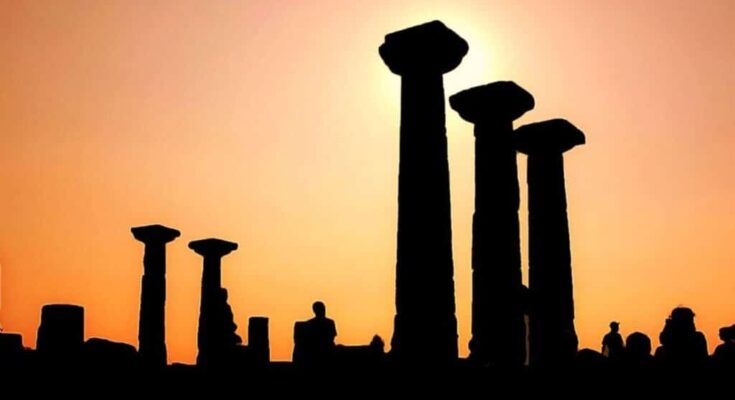
Excavations at the 7,000-year-old Assos Archaeological Site, located in the Ayvacık District of Çanakkale in Turkey, are continuing to reveal important structures from the Hellenistic, Roman, and Byzantine periods.
Assos is considered one of the finest examples of a Greek city-state and was a hub of activity for scholars like Aristotle, who taught there.
Historical significance of Assos in ancient Greece
Assos was an ancient Greek city in the region of Troas, founded by Aeolians from Mithymna on Lesvos in the 10th century BC. It was a coastal city located on the northern shores of the Adramyttine Gulf, directly across from Lesvos.
Aeolian settlers from Mithymna, Lesvos established the city of Assos between 1000 and 900 BC. The natural splitting of the rock into elevated floors significantly aided human efforts in shaping the space. The settlers built a Doric temple dedicated to Athena on top of the rock in 530 BC. From this temple, Hermias of Atarneus, a student of Plato, ruled over Assos, Troas, and Lesvos for a period of time during which the city experienced great prosperity.
Ongoing excavations at Assos: Discoveries and insights
The excavation director, Dr. Nurettin Arslan explained:
“In the eastern part of the city, in an area we call the agora, we have uncovered a large structure, which we believe to be a nymphaeum, or fountain. Our work in this area is ongoing. Additionally, just behind the western gate, we are uncovering a Byzantine structure that we believe served as an inn. Every year, we excavate a new room from this building to learn more about its function and usage.”
The excavations at Assos, which are being conducted by a 25-person team from both Turkey and abroad, are led by Arslan, a faculty member at the Çanakkale Onsekiz Mart University’s Faculty of Humanities and Social Sciences in the Archaeology Department. The project is sponsored by İÇDAŞ and supported by the Ministry of Agriculture and Forestry.
Uncovering structures from different historical periods
In speaking about the excavations, Arslan also stated:
“Our efforts this year include both excavation and restoration work in various parts of the city. We are also conducting research on the history of the acropolis walls. We are drilling in certain areas to determine their construction dates.”
Arslan emphasized that the areas they currently excavate belong to various historical periods. “For instance,” said the professor “the nymphaeum, which was essential in meeting public water needs, dates back to the Roman period. Another structure, the gymnasium, was an important educational institution during the Hellenistic period. This large structure played a significant role in the life of the city. Additionally, we are working on a Byzantine structure known as the ‘xenodokhion,’ which served as an inn for travelers.”
He explained that each of the structures is uniquely significant for the respective period in which they were built.



